All about patchwork bedspreads
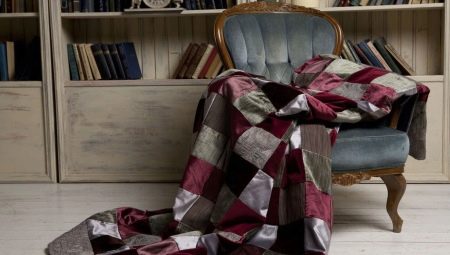
A bedspread using the patchwork technique is a beautiful, bright and artistically decorated home textile, and even a beginner can sew it. A patchwork quilt can be the first truly quality piece in your home that you create with your own hands. In our article, we will dwell in more detail on the features of sewing such bedspreads.
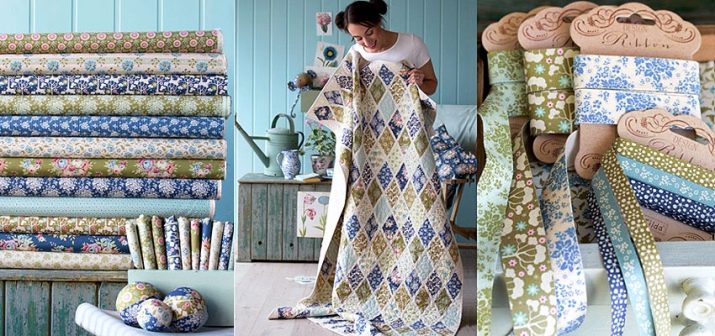
Peculiarities
The patchwork sewing technique came to us from England, in its exact translation this term means “sewing from scraps of fabric of different colors” and this translation maximally reflects all the features of this technique. For the first time, patchwork quilts were sewn from the remnants of linen in order to save money, a little later the craftswomen realized how beautiful and original the finished products are, and began to make stylish products from pieces of fabric on purpose.
The patchwork technique came to Russia at the end of the 19th century and since then has been invariably popular with our needlewomen. - many craftswomen prefer to decorate their homes in this style, creating truly homely and cozy things.
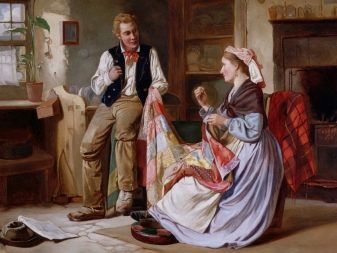
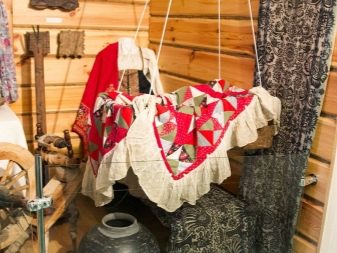
Experts note that patchwork is a rather complex process that requires maximum concentration of attention and very painstaking work. Despite all the laboriousness, even novice craftsmen can do patchwork. This is a very interesting case, and the result is truly amazing, while the pleasure from the process of its creation is no less than the joy from the result obtained.
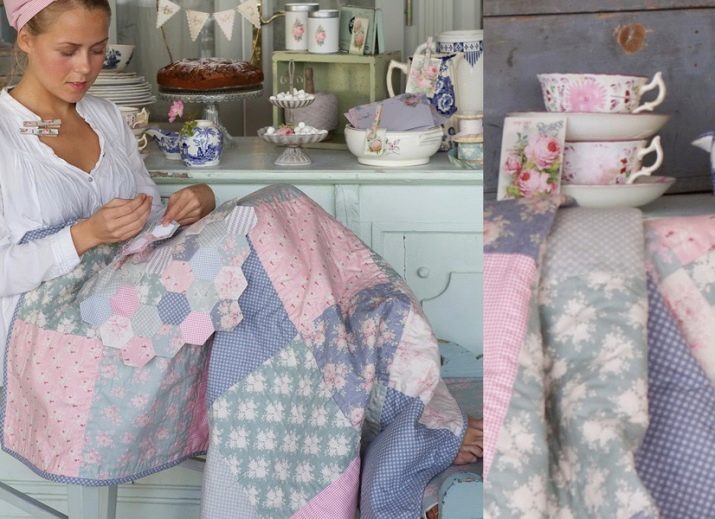
Overview of views by stitching method
Beginners in patchwork sewing usually use patterns with large patches - this allows you to make a blanket much faster. For experienced craftswomen, there are many other working schemes based on the formation of complex prints from small-sized figures. We draw your attention to the fact that usually only the upper part of the blanket is sewn from pieces of fabric, for the lower one they usually use one-piece canvas - this not only greatly simplifies the work, but also increases the durability of the finished blanket. To fasten the cuts, use edge seam.

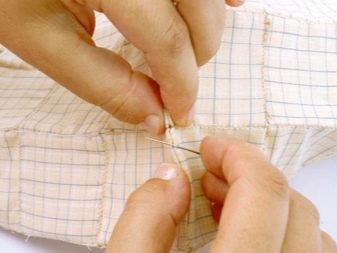
Of course, the linen line will be stronger, but often it will not be able to pierce the workpiece, which consists of three dense layers.
There are several basic patchwork sewing techniques.
"Fast squares"
A patchwork product is formed from many square pieces of the same or different sizes.
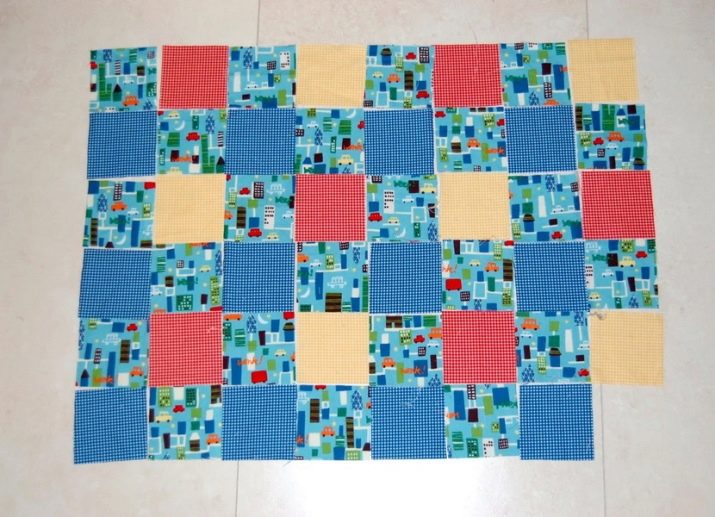
"Watercolor"
Here, special attention is paid to the coloring of the finished product.
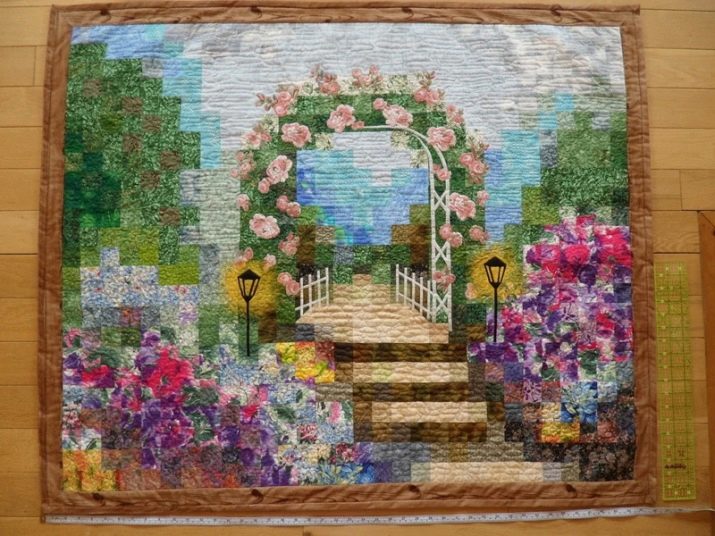
"Strip to strip"
Such a blanket is sewn from elongated rectangles fixed to each other in turn.
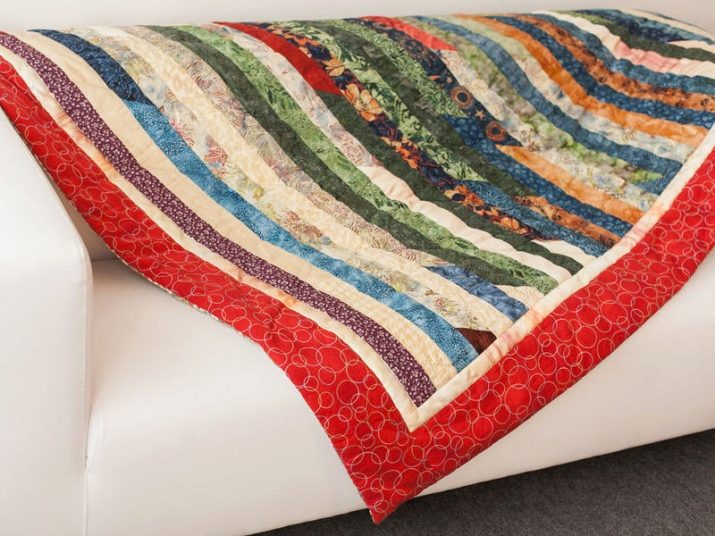
"Log hut"
In this case, a square is located in the central part of the pattern, and stripes are sewn in a spiral next to it.
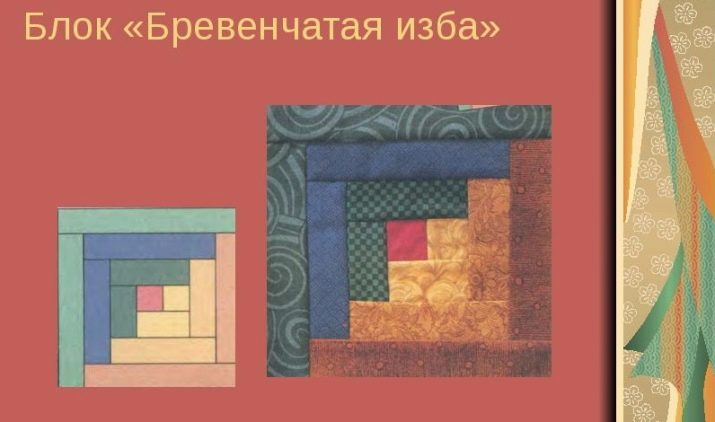
"Magic Triangles"
These blankets are composed of triangles folded into simple or complex prints.
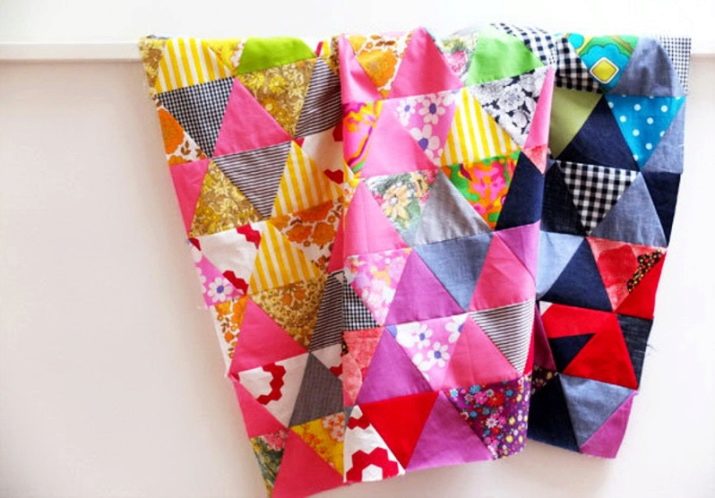
"Russian square"
It is a multi-tiered sewing technique.
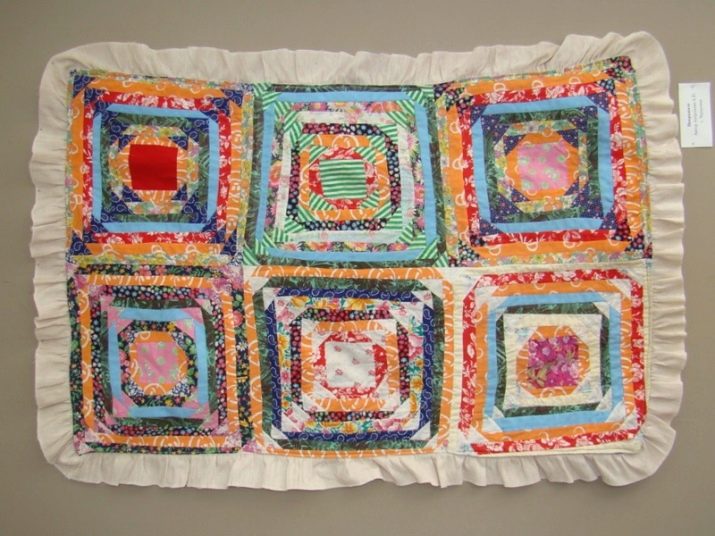
"Chess"
As the name implies, the blanks are sewn here in a checkerboard pattern, usually light and dark fragments alternate.

"Honeycomb"
This drawing consists of hexagons of the same size.

Materials (edit)
The most common fabric for making patchwork quilts is cotton. This material has many advantages over other canvases:
- the possibility of a bright combination of shades and prints;
- average density;
- the material does not crumble, so the edges of the flaps do not need to be additionally processed on an overlock;
- the fabric is lightweight and tactile;
- cotton practically does not wrinkle and keeps its shape well;
- easily stitched;
- the material does not shine with use;
- does not shrink during washing;
- cotton knitted fabrics are completely natural, so they do not cause allergic reactions in the wearer.
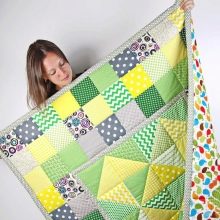

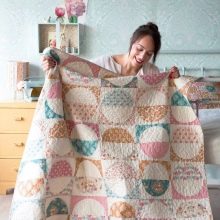
You can also use these options.
- Denim - An excellent option for patchwork techniques, the canvas allows you to create quite creative products in a variety of shades of blue. Jeans looks especially impressive if you quilt a blanket and add metallic decorative elements.
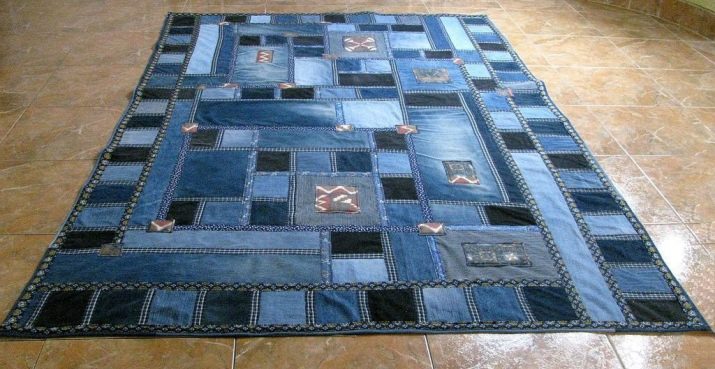
- Linen - here its softest and thinnest varieties are used. Not everyone likes this material, because it crumples quickly. However, it can be used for patchwork, since the fabric is easy to iron and holds its shape perfectly in the finished blanket.
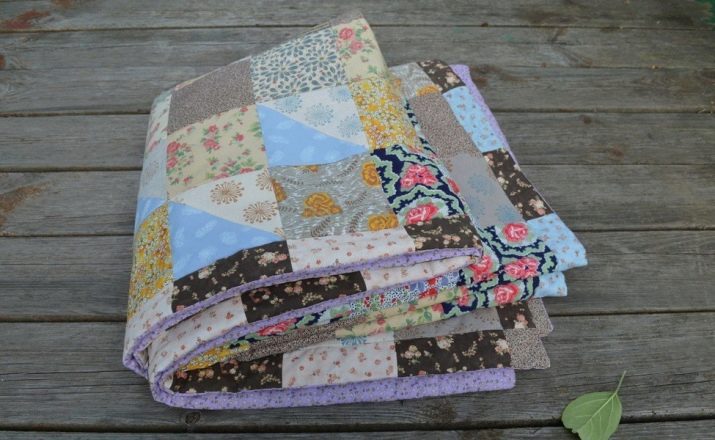
- Viscose - soft, pleasant to the touch and very pliable material. Often it has a weak stretch effect, for this reason it is often difficult to combine fragments of viscose and some other, not so elastic materials in one blanket. That is why one type of fabric is used for patchwork - the finished viscose blanket turns out to be very effective and soft.
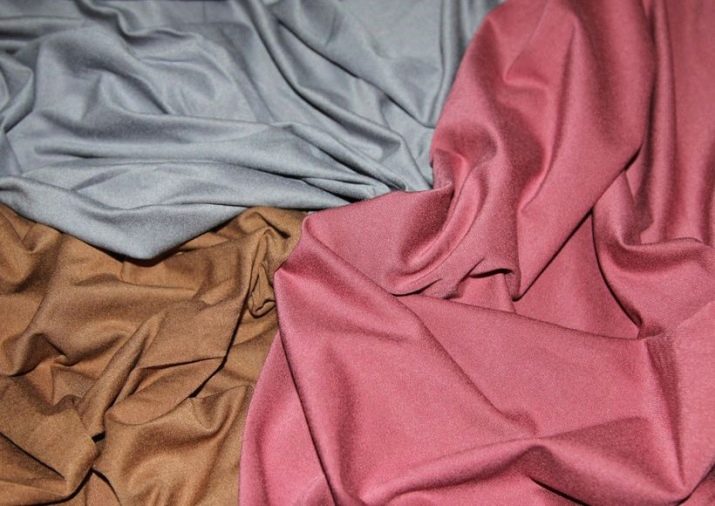
- Wool Is a completely natural insulated material that is optimal for making large rugs and blankets. Felted wool fragments are often used for decoration.
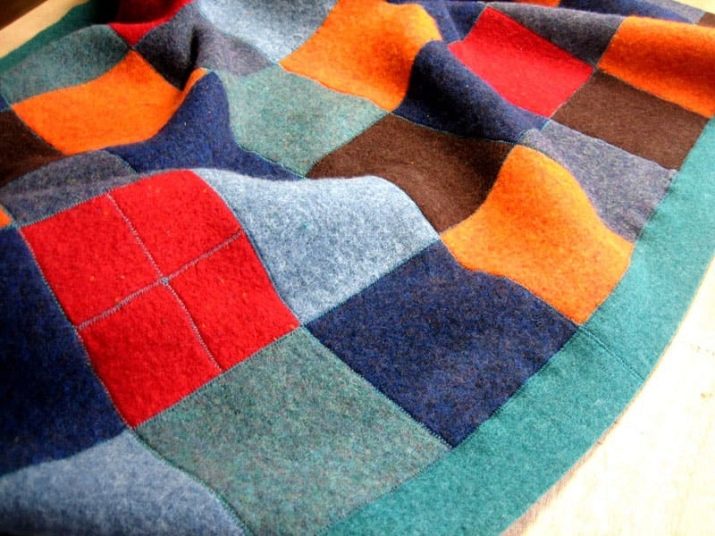
- You can also use fragments of furniture fabric.
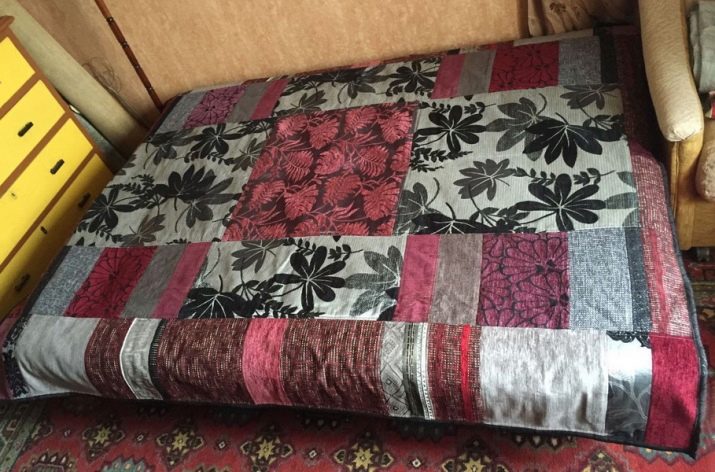
The following types of fabrics are less suitable: too elastic, stretchy fabric:
- dense coat materials, neoprene and other fabrics with a rigid shape;
- pleated and corrugated canvases;
- materials interspersed with metallized threads;
- artificial or natural fur.
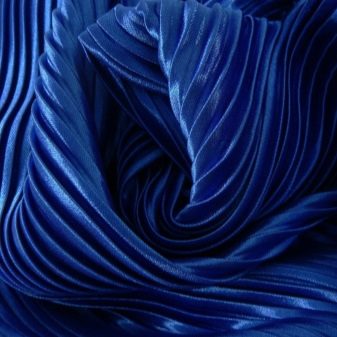
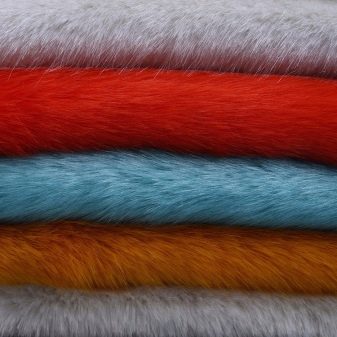
Popular models
Many people prefer hand-made bedspreads. For beginners, it is usually advised to use the most primitive technique based on fastening squares of the same size. They can be small or larger, it directly depends on how much time and patience the master has.
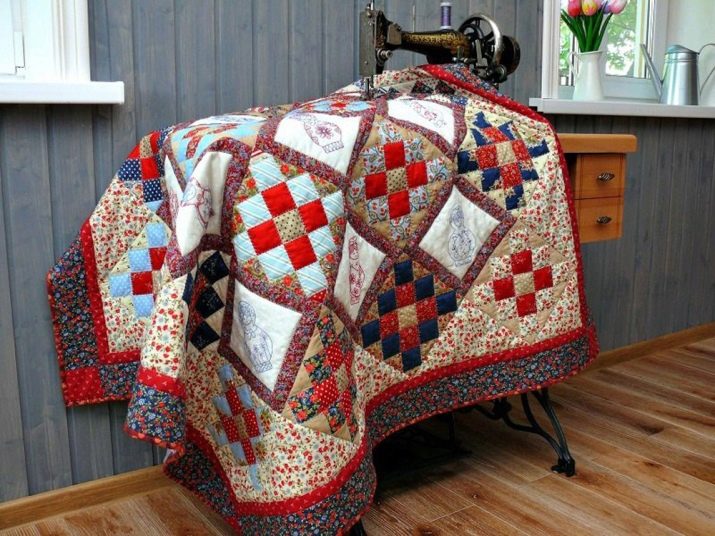
Knitted blankets on beds and patchwork sofas are popular. This design is a bit like sewing, but in this case, individual fragments are taken, crocheted or knitted. Such products are especially popular in the arrangement of living rooms and bedrooms in the Scandinavian style. In this technique, you can sew ready-made cut fragments or knit a product with a solid knit according to a special multi-colored pattern. For those who do not know how to sew and knit or do not have time for this, well-known European manufacturers, factories from China and Turkey offer ready-made products in the patchwork style.
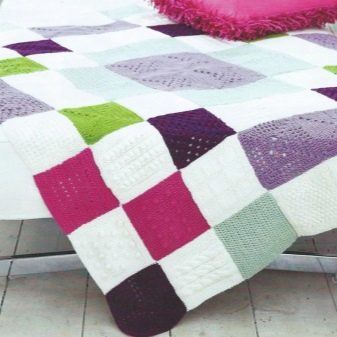
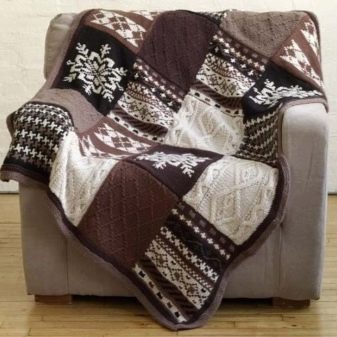
Among the best manufacturers are the following.
- Ivanovo - one of the most famous sewing centers in our country. Of course, he could not ignore such a popular direction of the textile industry - the range of offered blankets is truly striking in its diversity. The vast majority of models are presented in the form of a ready-made sample, and when ordering, it is possible to sew blankets in any color scheme and any size, depending on the wishes of the client.

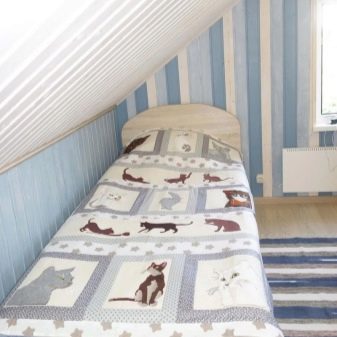
- Marca marco milano Is an Italian designer of single-piece quilts. The manufacturer offers original and colorful bedspreads, there are children's models.
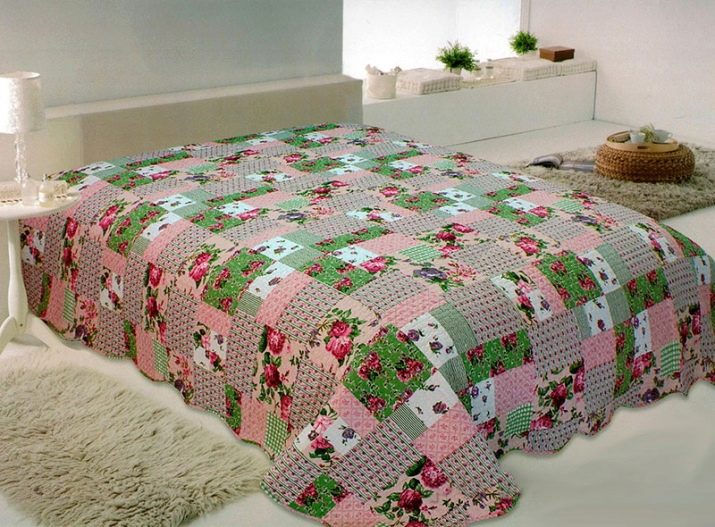
- "Tango" - the imitation of patchwork technique from some manufacturers deserves special attention. For example, such products in a wide range are offered by the Chinese company "Tango", visually it is very difficult to distinguish them from real patchwork products - this can be done only with a detailed examination.
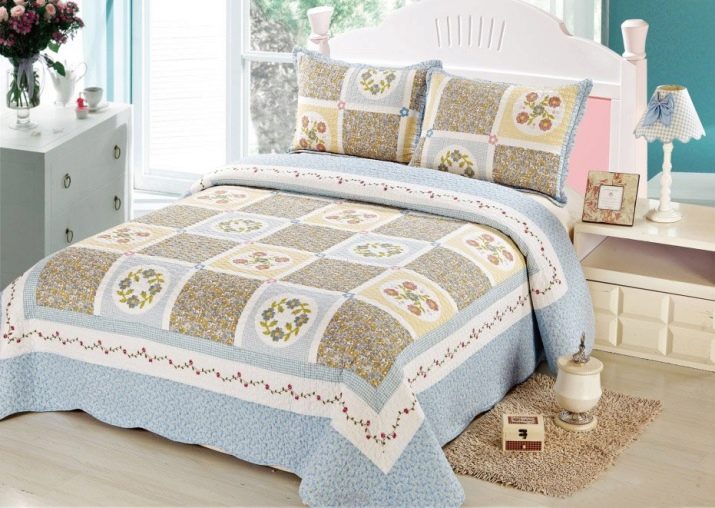
How to sew with your own hands?
Experienced craftswomen give a few simple tips for beginners, they will allow them to facilitate the process of sewing patchwork blankets with their own hands. First, determine the correct size and make a pattern - all the features of further work directly depend on this.
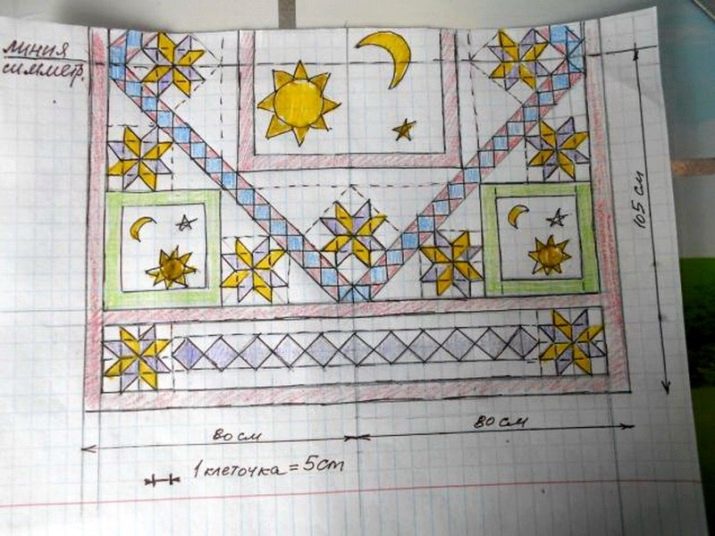
Choose the right color scheme - the harmony and decorativeness of the finished product will depend on the compatibility of shades.
Before starting work, be sure to soak the fabric for a quarter of an hour in hot water. In order to make it easier to work with textiles, it is recommended to first starch and iron it thoroughly. When forming fragments of a given size, do not forget to leave small allowances for the seams. Prepare a soft purl in advance. To complete the work, you will need the following tools:
- needle;
- threads;
- safety pins;
- chalk or pencil;
- ruler;
- sewing machine;
- directly the template.

Sewing quilts in a patchwork style includes several main steps:
- formation of a sketch;
- selection of material;
- connection of patches;
- formation of a finished product.
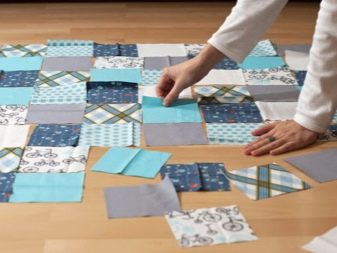
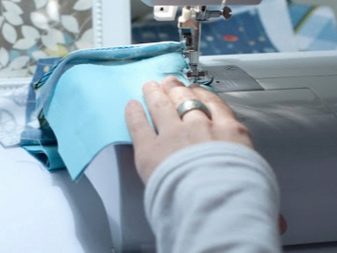
Some novice masters pay insufficient attention to the very initial stage - drawing a sketch. Nevertheless, this part of the process is one of the most responsible, since the general appearance of the bedspread directly depends on it. The drawing can be formed on paper in accordance with your own preferences or you can take a ready-made scheme from the Internet, you can also lay out the pattern on any horizontal surface.
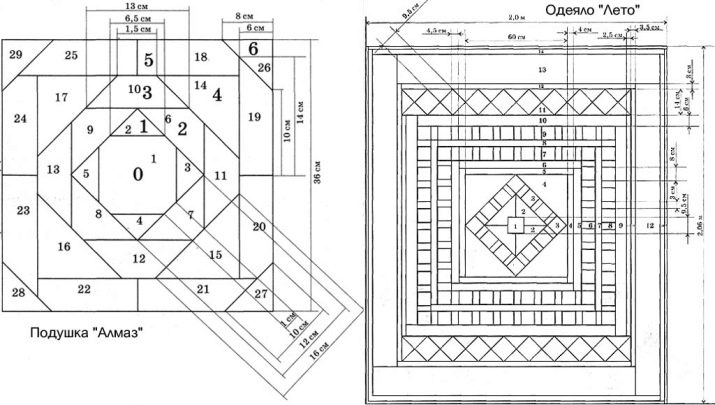
To facilitate the work, it is worthwhile to first study the master classes - this will greatly speed up the further process of creating a blanket for the home.
Selection of pieces of fabric by color
It is not easy to choose pieces of fabric so that they are beautifully combined with each other, but it is extremely important, since the aesthetic appearance of the blanket will depend on this. In this matter, you should proceed solely from your own preferences. When creating two-tone blankets, there is only one rule - dark and light shades.But with multi-colored blankets, the situation is much more complicated, since colored pieces of fabric should not be sewn in a chaotic manner, but to form a certain pattern based on the developed patchwork sewing pattern.
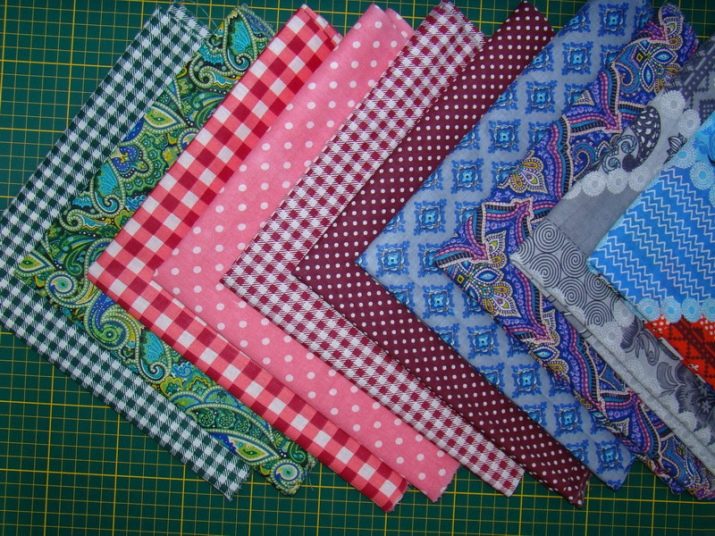
It is very important to adhere to the principle of combining shades., it is best for novice craftsmen to use the technique of three patterns and three colors - contrasting tones will make up the necessary dynamics if the base canvas is not chosen too brightly. When choosing a pattern, the following rules apply.
- Avoid too bright and small patterns, otherwise, such a blanket in the room will quickly begin to ruffle your eyes.
- To create complex patterns it's better to experiment through shades, and not through small pieces of fabric.
- Give preference large drawings bright solid color, you should not collect many small elements in the pattern.
- Before work be sure to lay the pattern on the floor and move back a short distance, to make sure the colors are correct.
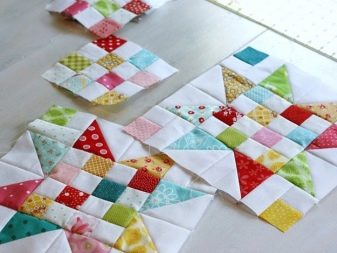

Manufacturing
Follow the step-by-step instructions when joining tissue patches.
- Two strips of equal size should be cut from blanks of textile fabric of different colors.
- They must be folded with the wrong side of each other, sewn and carefully ironed.
- Next, a strip should be cut out of the textile of the third color, the dimensions of which correspond to the first two.
- All strips are folded right sides and sewn.
- Thus, a double-sided sleeve is formed, from which you can then cut the squares of the desired size, then you just have to decide on the print and start sewing.
- If the pattern is made up of triangles or hexagons, first they are connected by 4, then by 8 - so on until the final completion of the entire composition.
- If the plaid is sewn from squares, then the technology may be slightly different - square blanks are connected into separate strips, and after ironing all the seams, ready-made bedspreads are assembled.
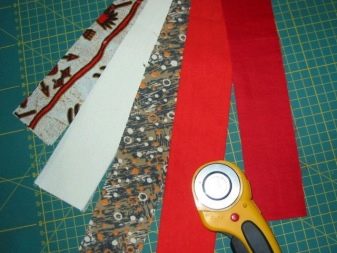
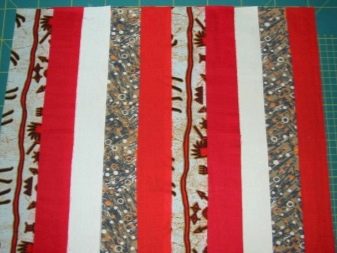
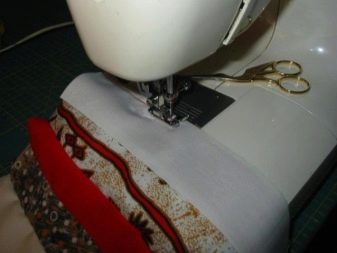
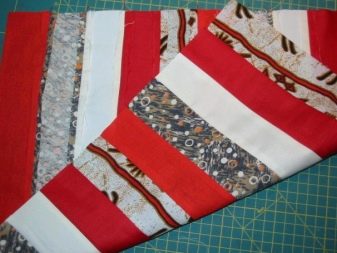
After the front of the blanket is ready, you can start forming the product itself. For this, a piece of warm matter is placed on a horizontal surface so that its front surface looks down. If you want to sew an insulated blanket, then you need to lay a layer of padding polyester inside out. The front side with a patchwork pattern is laid out on top, then the entire product is stitched around the perimeter. An edging is formed from a strip of material about 5-8 cm, if, according to the working sketch, the edging should be wider, then the canvases should be taken on it a little more.

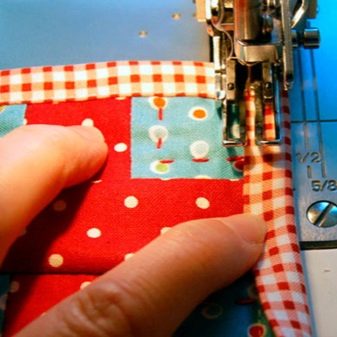
When making a children's patchwork quilt, it is advisable to use the quick square method, pink and nude textiles are usually chosen for sewing bedspreads for girls, and blue and green shades are preferred for boys.
For a baby blanket, you will need 4 types of textile fabric and fleece to form the wrong side. The easiest way to make a baby blanket is from 48 rags. To sew such a product, you need to cut the prepared material into square rags of equal size, adding a little on each side for allowances. Square rags are sewn in strips, then laid out on a fleece, carefully rounded off the edges with scissors, and then sewn. Surely your child will be happy to be covered with such a blanket.

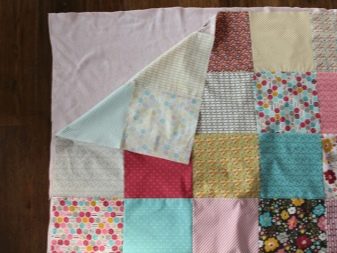
Examples of products
Patchwork and quilts in the patchwork style are becoming more and more popular every year. If in the old days such a product was more likely evidence of a poor life and the need to save money, nowadays such a design can be found in the most fashionable magazines for interior design. In many ways, this popularity was facilitated by the interest in the Scandinavian direction in the decor and style of northern life of the hygge, for which the main element of any home is cozy details that create a feeling of comfort and security in the house.
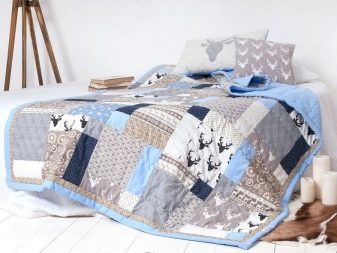
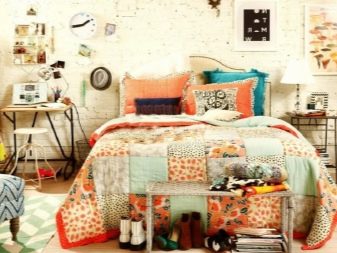
Within the framework of this style, it is very important to create unique things that make the house truly unique, expressing the individual taste of its owners.
We offer you a selection of the most interesting ideas for patchwork blankets... Children's bedspreads in the patchwork technique look very cute and touching. You can use them from the very first days of a baby's life, ending with the arrangement of a teenager's bedroom - in any case, you can find tones, textures and prints that will delight children of all ages. In order for your child to like a blanket, it does not have to be too intricate, in this case the principle directly works that the simpler, the more interesting it will be. Connections of large squares look very nice, especially if you can see your favorite cartoon characters, bears, squirrels, bunnies and hearts on them.

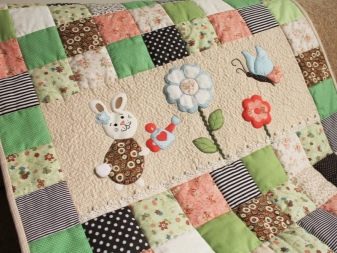
Any patchwork blanket will always be unique not only for its owner, but also for his friends who will come to visit.
For information on how to sew a patchwork quilt and calculate consumables, see the next video.








